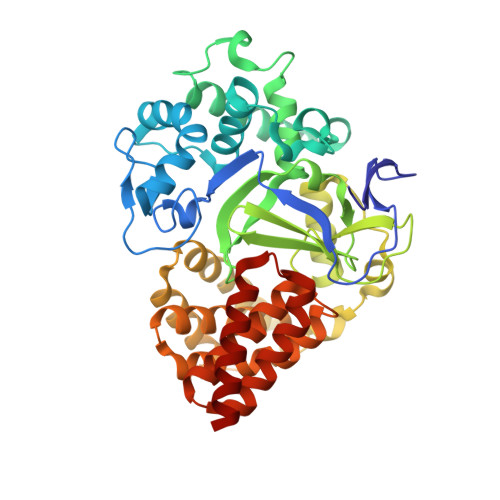Discovery of an Allosteric Ligand Binding Site in SMYD3 Lysine Methyltransferase.
Talibov, V.O., Fabini, E., FitzGerald, E.A., Tedesco, D., Cederfeldt, D., Talu, M.J., Rachman, M.M., Mihalic, F., Manoni, E., Naldi, M., Sanese, P., Forte, G., Lepore Signorile, M., Barril, X., Simone, C., Bartolini, M., Dobritzsch, D., Del Rio, A., Danielson, U.H.(2021) Chembiochem 22: 1597-1608
- PubMed: 33400854
- DOI: https://doi.org/10.1002/cbic.202000736
- Primary Citation of Related Structures:
6YUH - PubMed Abstract:
SMYD3 is a multifunctional epigenetic enzyme with lysine methyltransferase activity and various interaction partners. It is implicated in the pathophysiology of cancers but with an unclear mechanism. To discover tool compounds for clarifying its biochemistry and potential as a therapeutic target, a set of drug-like compounds was screened in a biosensor-based competition assay. Diperodon was identified as an allosteric ligand; its R and S enantiomers were isolated, and their affinities to SMYD3 were determined (K D =42 and 84 μM, respectively). Co-crystallization revealed that both enantiomers bind to a previously unidentified allosteric site in the C-terminal protein binding domain, consistent with its weak inhibitory effect. No competition between diperodon and HSP90 (a known SMYD3 interaction partner) was observed although SMYD3-HSP90 binding was confirmed (K D =13 μM). Diperodon clearly represents a novel starting point for the design of tool compounds interacting with a druggable allosteric site, suitable for the exploration of noncatalytic SMYD3 functions and therapeutics with new mechanisms of action.
Organizational Affiliation:
Department of Chemistry-BMC, Uppsala University, Husargatan 3, 754 24, Uppsala, Sweden.


















